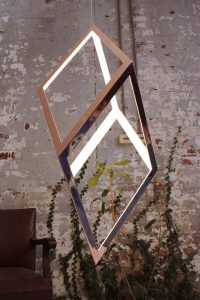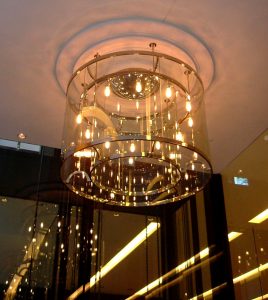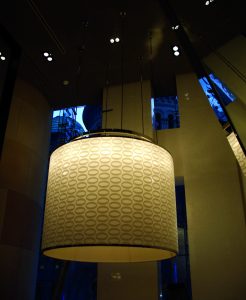
For as long as we have been human, we have relied on light to guide us, to heat us and to show us what we need to see. Historians would estimate that fire was discovered, albeit by accident, more than 70, 000 years ago. Even in its rawest form, we humans created and designed ways to make the lights work for us. Whether it was a hollowed out rock, or something other inflammable material, people started making lamps.
In today’s world we have amazing chandeliers, funky pendants and even cleverly places floor lights to guide the way.
Design has always played a role
As far back as ancient Greece and Rome, people took great interest in old lights, lamps and lighting design. If it was lighting in the theatre, ornate and spectacular lighting was essential for a fantastic audience experience. They truly were a feature to be admired. In day to day lives of the ancient Greeks, lighting was a significant aspect of design, both in fixed lights and lamps. The most common lamps were clay lamps, designed by either a wheel or hand. But even back then, the choices you made when designing your lighting fixtures and lamps, the choice of material made a statement on who you were. Lamps were designed using any number of materials, including the materials we use commonly today, such as iron, lead, silver, gold and even stone. So while we mightn’t have had the overseas chrome and nickel we have today, there was still a pretty stunning choice.
Fuelling design ideas through the ages
Between Ancient Greece and Rome and the invention of the electric lamp, there were some fascinating developments in lighting. Inventors played around with different fuels and ways to create efficient lighting. When the central burner was invented in the 18th century, adjustable fuel controlled lighting became commonplace. By the beginning of the 19th century, gas fuel had changed the face of lighting and fixtures, street lamps and residential lamps and lights. Again, this opened the door to creative and interesting designs. Ornate stylish designs married with function, to compliment interior and exterior designs.
Electric dreams of oft forgotten inventors and Thomas Edison
We all know of Thomas Edison and many of us have been under the illusion that the genius American inventor actually invented modern electric lighting. While he created and patented the first commercial incandescent lamp, he was simply improving on an invention that had long since existed.
As far back as 1801, when Sir Humphrey Davy invented the first electric carbon arc lamp, electricity has been used to fuel lighting. Years later, inventors such as Canadians Henry Woodward and Matthew Evan patented a light bulb well before Edison. The trouble was they just didn’t have the funds to turn their inventions into commercial products.
In the late 1870s, Edison and English inventor Sir Joseph Swan simultaneously invented electric incandescent lamps.
As the pair’s inventions took over, and lamps and light bulbs became commonplace, so too, design began to play a huge role. Extraordinary pieces such as elaborate chandeliers and gorgeous intricately designed lamp fixtures became a show of class, of taste and of distinction. People used any number of materials, including all the same metals we provide today.
From classic to creative design
Since the modernisation of the new light, lighting fixtures and lamps, we’ve had a wonderful cornucopia of choice when it comes to design. Your choice of light and your choice of light design can fundamentally affect the rest of your vision. With a change in light, you can add mood, change tone and colour and the accessories and fixtures can add the perfect complement to your room. If your design goal is to create something timeless and classic, perhaps you will be interested in some of these fantastically antique designs, found on Houzz. For those, looking for a little fun, or colourful personality, try some of these adventurous ideas for lamp and lighting design. Whether you want a spot light, a desk light or a fantastic feature light, the metal surrounds can play a huge role.
spot light, a desk light or a fantastic feature light, the metal surrounds can play a huge role.
Want to add a touch of bespoke? Look no further
The wonderful thing is that it is up to you. Whatever you choose, make sure it is something that suits you. Now, many of these choices are all made using a metal base. The good news for you is, if you have a metal based fixture that just doesn’t quite match your vision in metal tone, style or choice, we can help. If you’ve found a design you love, but you’re looking to add a touch of originality to your interior, or exterior for that matter, we can help. Perhaps you’ve found some metal fittings and you want them to be consistent, we can help.
No matter what your metal finishing needs, Astor can help you. Get in touch now to find out how we can turn your metal design dream into a reality.



